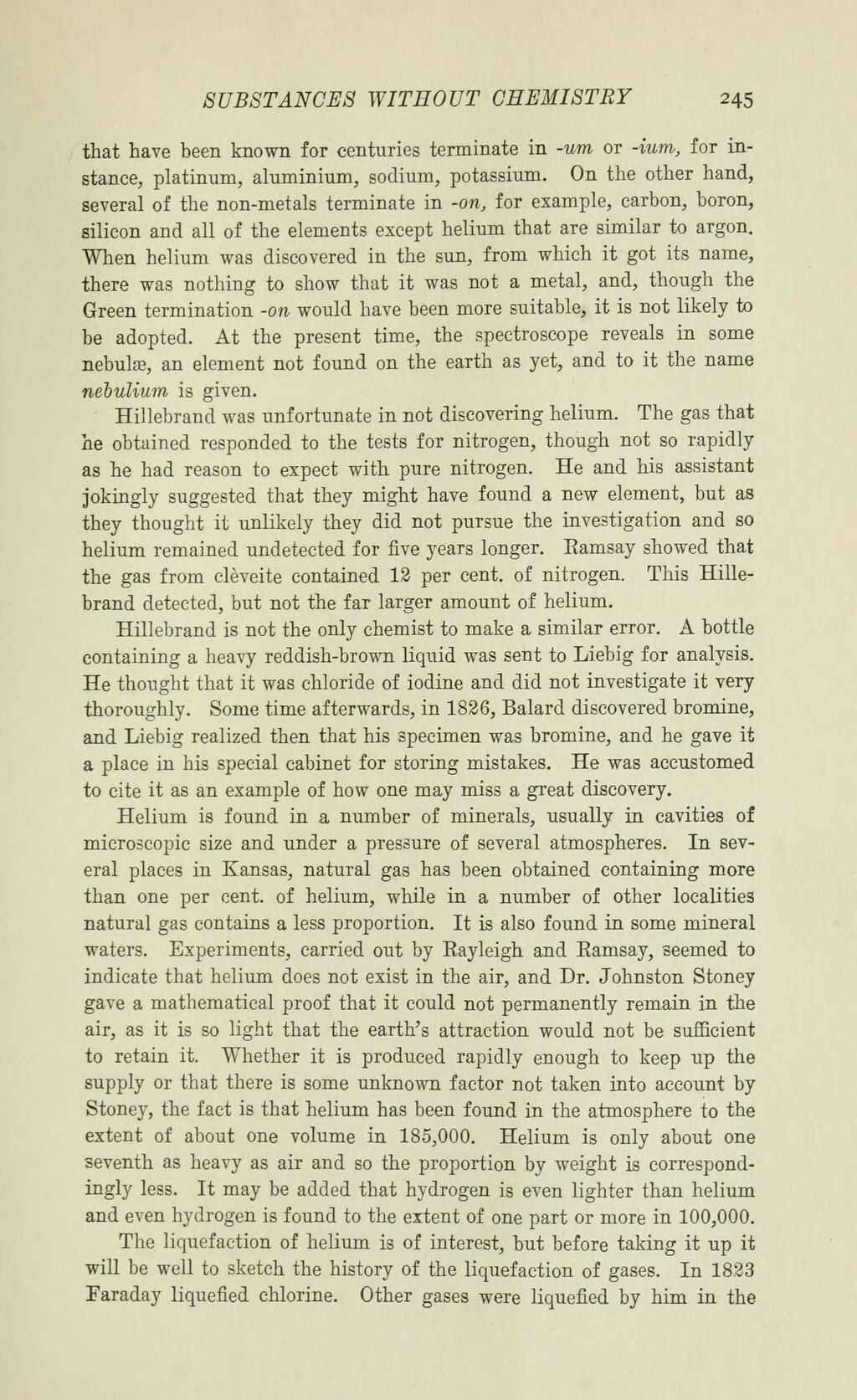SUBSTANCES WITHOUT CHEMISTRY 245
that have been known for centuries terminate in -um or -ium, for in- stance^ platinum^ aluminium^ eodium^ potassium. On the other hand, iseveral of the non-metals terminate in -on, for example, carbon, boron, silicon and all of the elements except helium that are similar to argon. When helium was discovered in the sun, from which it got its name, there was nothing to show that it was not a metal, and, though the Green termination -on would have been more suitable, it is not likely to be adopted. At the present time, the spectroscope reveals in some nebulae, an element not found on the earth as yet, and to it the name nebtUium is given.
Hillebrand was unfortunate in not discovering helium. The gas that . he obtained responded to the tests for nitrogen, though not so rapidly as he had reason to expect with pure nitrogen. He and his assistant jokingly suggested that they might have found a new element, but as they thought it unlikely they did not pursue the investigation and so helium remained undetected for five years longer. Eamsay showed that the gaa from clSveite contained 12 per cent, of nitrogen. This Hille- brand detected, but not the far larger amount of helium.
Hillebrand is not the only chemist to make a similar error. 'A bottle containing a heavy reddish-brown liquid was sent to Liebig for analysis. He thought that it was chloride of iodine and did not investigate it very thoroughly. Some time afterwards, in 1826, Balard discovered bromine, and Liebig realized then that his specimen was bromine, and he gave it a place in his special cabinet for storing mistakes. He was accustomed to cite it as an example of how one may miss a great discovery.
Helium is found in a number of minerals, usually ia cavities of microscopic size and under a pressure of several atmospheres. In sev- eral places in Kansas, natural gas has been obtained containing more than one per cent, of helium, while in a number of other localities natural gas contains a less proportion. It is also found in some mineral waters. Experiments, carried out by Bayleigh and Bamsay, seemed to indicate that helium does not exist in the air, and Dr. Johnston Stoney gave a mathematical proof that it could not permanently remain in the air, as it is so light that the earth's attraction would not be sufficient to retain it. Whether it is produced rapidly enough to keep up the supply or that there is some imknown factor not taken into accotmt by Stoney, the fact is that helium has been found in the atmosphere to the extent of about one volume in 185,000. Helium is only about one seventh as heavy as air and so the proportion by weight is correspond- ingly less. It may be added that hydrogen is even lighter than helium and even hydrogen is found to the extent of one part or more in 100,000.
The liquefaction of helium is of interest, but before taking it up it wiU be well to sketch the history of the liquefaction of gases. In 1823 Faraday liquefied chlorine. Other gases were liquefied by him in the
�� �
